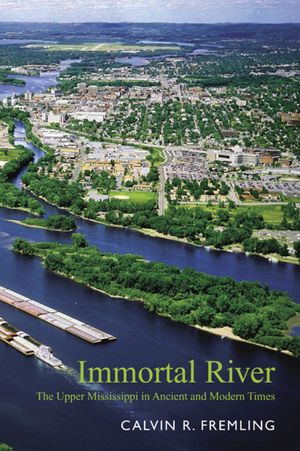David
Heiller
Mom and I were looking through
some old photos a couple of month ago. They were from the Schnick farm in about
1920. Most showed scenes and people. There were several pictures of women in white
on a picnic on one of the bluffs.
 |
| Unfortunately, I only have a photocopied version of this photo.I would love to have an "actual" image, if any one from the area has one that they would be willing to share. |
Then the photographer, probably
Ben Schnick, did a very good thing and turned his camera toward the Mississippi River and took the picture shown here.
It is taken from the bluff just
to the north of Shellhorn Road. You can see the railroad track parallel to it.
What’s amazing to me is how
different the river looks. For one thing the main channel, known as Raft
Channel, hugs the Minnesota shore then jogs to the east around a big spit of
land in front of where Valeree Green now lives.
That whole stretch of river
with all its timber and islands and sloughs is now pretty much an open expanse
of water thanks to Lock and Dam number eight at Genoa, Wisconsin.
That dam and 28 others were
built as part of the Nine-Foot Channel Project. Most were built in the 1930s.
The Genoa dam was built from 1934-1937. When the photo was taken, the Main
Channel was kept at a depth of six feet
as Congress authorized in 1907. This act authorized 2,000 additional wing dams,
dredging, and dams at locks at Keokuk and LeClaire, Iowa.
When the locks and dams were
constructed, the water rose and the lower ends of each pool were inundated. The
beautiful bottomland shown in this photo disappeared. I remember my Uncle Donny
telling me that the Genoa dam took away a good chunk of Heiller farmland, which
is barely visible in the upper right hand part of this photo. He wasn’t real
happy about that. It wasn’t great farmland, being susceptible to flooding, but
it timber and hayfields and pasture.
I bet people like Donny were upset with the project for
recreational and aesthetic reasons too. When I see photos like this, I
want to hop in the canoe and go fish and explore. The river was more like a wilderness then. Imagine the Reno Bottoms extending all the way up and down the river.
That’s what it was
like.
Calvin R. Fremling gives an excellent account of this (and much more)
in his book, Immortal River. “Prior to the inundation
in the 1934-1940 period, the river bottoms were primarily
wooded islands
separated by deep, running sloughs.
Hundreds of small lakes and ponds were scattered through the wooded
bottoms. Bay meadows and small farming operations, mainly haying and grazing occupied some areas on larger islands,” he writes at
the start of a chapter called “The Glory Years.”
Some good
things, beside improved commerce, did come out of the damming of the river, Fremling
says. One thing I like is that it converted ownership from private to public.
“In an era when ‘no trespassing’ signs were becoming increasingly prevalent, it
made the lands available, in perpetuity, for public use,” Fremling notes.
Anyone who uses the Upper Mississippi River National Wildlife and Fish Refuge
can be thankful for that.
The Nine-Foot Channel Project also controlled flooding, and enhanced
the opportunities for recreational boating. It increased more fish-food
organisms and more fish because the river’s surface had increased exposure to
the sun’s energy.
This is just some of the great information in Fremling’s excellent book.
It’s like a Bible of river history, geology, and science. I couldn’t recommend
a book more highly.
But I’ll still reminisce about a river I never knew, one my
great-uncle Ben captured so many years ago. I know, time marches on, progress
is good, people are starving in China, blah blah, blah. But we should remember
that we lost a tremendous resource right in our front yard when the river was
dammed.

